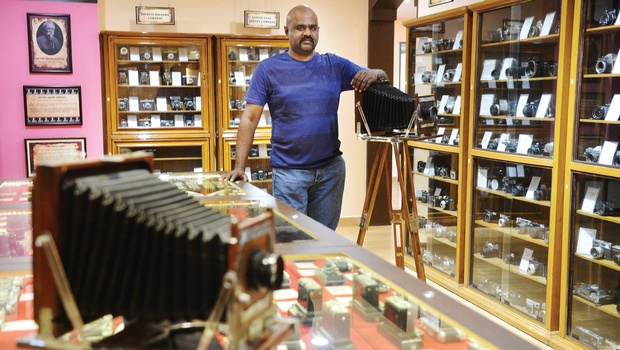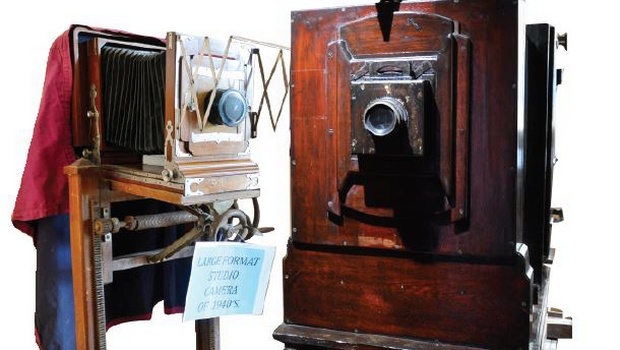
On the busy East Cost Road in Chennai in Tamil Nadu, most people give a cursory glance to a signboard that says ‘Dr Arun’s Camera Museum’ in the hamlet of Kovalam and make a mental note to check it out later. “I’ve heard so many people say they have passed the museum but never visited it,” laughs Dr A V Arun, a dentist and the founder of India’s first camera museum. He admits that since its launch in January, 40 people walk in each day, but he is sure that footfall will increase with time. “Across India, there are many private camera collectors, but I’m perhaps the first one to open up the collection for public viewing,” says the 46-year-old who displays over 1,500 cameras in the museum and several books on photography dating back to 1930. “I have more at home,” he says.
In 1998, a casual weekend stroll in Moore Market, a popular flea market in the city, ignited Arun’s pursuit to read, learn and collect cameras. “I saw two twin lens cameras in a broken-down condition. I bought them for `100 each and got home to read about them and tried to repair them,” he says. He doesn’t spend big on cameras. Even during work-oriented trips, he visits local flea markets to find rare cameras. “The stories on how I collected all these cameras would provide a more interesting read,” laughs the doctor. “I got them from an auto driver, a homemaker, senior photographers and others. A common sentiment was that they all wanted to pass it down to someone who would value it as much as they did.”

At the far end of the museum sits a six feet long large format studio camera, which he found in an attic of a third generation photographer’s home in Mysuru. “This young lad’s father and grandfathers were photographers, and he wanted to sell it to buy a bike,” Arun says with a smile. He believes that the camera would have been used in palaces to take photographs of maharajas. “You can’t move the camera, it’s meant to be in one place,” and he brings to attention that 75 per cent of his collection is in working condition. “The very old cameras, especially from the 30s, cannot be repaired simply because we do not have their parts.”
The oldest one is a 1870 British wooden field camera. Another rare piece is a mahogany camera from 1890. A World War II Air Force in the collection was found by a friend in Thailand. “It was specifically made for the US to take aerial shots,” says Arun.
“The idea of a museum came simply because I was running out of space in my house. Photography enthusiasts would want to visit and discuss, and it was taking up a lot of my family space and time,” explains the collector, who displayed his collection at the World Camera Fair in Chennai in 2012. “I hold workshops and lectures at the museum today. Most of the visual communication students have read about these cameras. Imagine their delight when they see one. It helps them understand the functioning of the equipment better,” says Arun, and adds that his first love will always remain wildlife photography.
Arun is asking people to donate used digital cameras for his community support initiative called Camera For All. “Many groups support the poor and hungry, I’m keen on supporting children who have a passion. Through Camera For All, we will identify children from the Kovalam fishing village who want to give photography a shot. We will give each child a digital camera, train them and help them discover photography. It could be a new lease of life for them,” he says.
Arun explains that “every country has a unique type of camera. There are approximately 1,000 kinds of twin lens cameras in the world. I only have 300 of them”. He will continue his search for rare, almost forgotten camera boxes.
source: http://www.newindianexpress.com / The New Indian Express / Home> Magazine / by Jayanthi Somasundaram / May 21st, 2016